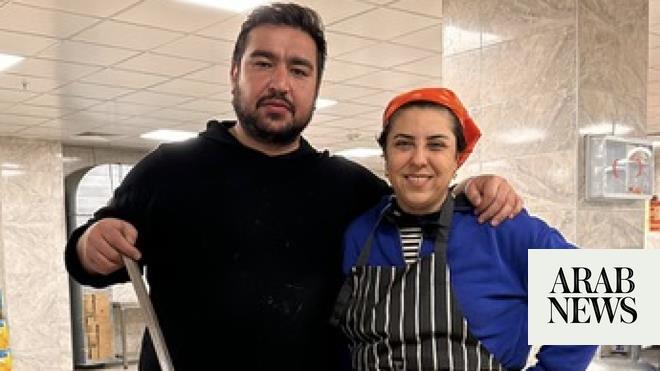
Sister Ester keeps several small plastic bags of colourful methamphetamine – or meth – tablets beside her bed, along with a pistol and a plastic box of bullets.
“All of these items were seized by our group in raids on houses selling drugs over the past few weeks,” she says.
A Christian ethnic Kachin nurse in her 60s, she says she has nowhere else to keep the haul.
“The safest way is to keep them with us until we can destroy them,” she says.
Ester says she is ready to sacrifice her life to eradicate the crisis destroying lives in her remote town in Myanmar’s north-eastern Shan state, on the border with China.
A senior nurse providing healthcare to the people of Mone Paw village in Muse township, Ester also leads an anti-drug movement called Hkam Sha Hpung, which translates from the Kachin language as “those who can’t stand the situation”. The group calls itself “group of mothers” in Burmese.
Her village is in an area that was partially controlled by the Kachin Independence Army (KIA) until 2011, when a 17-year ceasefire between the group and Myanmar’s military broke down.
Fighting between a patchwork of militias broke out across Shan state, and the area has since become the centre of the global methamphetamine trade. The UN Office on Drugs and Crime (UNODC) estimates that meth made in labs in south-east Asia could be worth more than $60bn (£48bn) a year, and that much of it originates in Shan state.
The area around Mone Paw village is controlled partly by government troops, partly by the KIA, and partly by an ethnic Palaung armed group called the Ta’ang National Liberation Army.
The local economy is traditionally based on farming, including maize and rice crops which are sold to Chinese brokers. But with fighting intensifying in recent years, agricultural trade has been eclipsed by meth production.
“The drug problem is growing very fast,” says Ester.
According to the UNODC Myanmar is also the world’s second-largest producer of opium, with poppy cultivation centred in Shan. But opium cultivation is declining as regional demand for heroin is overtaken by a booming market for synthetic drugs.
Back in 2012, Ester estimates that most of the men in Mone Paw village – which has a population of almost 3,000 – used drugs.
Her husband was among them.
“I tried very hard to help him. I even locked him in a room for several days. Unfortunately, I failed to help,” she says.
The couple divorced in 2012. Soon afterwards, Ester formed the anti-drug group, initiating an informal movement in cooperation with other village women.
Some of the men in the village had joined armed groups, while others were away working in China. With the police, the military and rebel armed groups among local authorities involved in the drugs industry to some extent, the women felt they needed to fill the gap.
Lashi Htan, the group’s vice-chair, was one of the first to join. Two of her three sons were drug users at the time.
“We were heartbroken to see the ones we love become drug addicts. It brought us together,” she says.
Initially, the group helped only their families.
“We chained them up and locked them in a room for weeks, sometimes up to a month. We provided them with healthcare and faith healing,” Htan says, referring to their method of treatment, which involves surrounding recovering users with prayer and religious songs .
“Thank God, my sons are not in hell, but are working in China now,” she says.
Nearly a decade after it was formed, the group now covers 22 villages. It conducts surprise checks on vehicles passing through the area, and raids dealers’ houses. The women issue fines and the money funds the group’s operations.
“If they refuse to pay the fine, we destroy their property,” Htan says, explaining that they set it on fire.
Sometimes the group sells seized goods at the local market.
“At first, we were not so effective, but we became the last straw for drowning people to grasp,” she said.
Armed groups in the area provide the women with security and information about drug production in areas controlled by rivals. The Myanmar military, for example, feeds them information about drug production in areas controlled by the KIA, and vice versa.
The women say that to some extent they are being exploited, but that the arrangement helps them on their mission to eradicate drugs.
“Half a loaf is better than none,” says Ester. “We need to have good relations with armed groups for our safety.”
Even so, the women often receive threats. A bomb was left outside the front door of Ester’s home in 2014. It was defused by the Mone Paw Militia, who are aligned with Myanmar’s military. Ester suspects it might have been connected to a KIA member whose house the group had raided.
The government-appointed administrator of Mone Paw village says local authorities and armed groups face limitations in enforcing law. For example, government troops can’t access rebel-held territory.
“But the ‘Women Pat Jasan’ group can do it freely. They go wherever they want to go,” he says over the phone. The group is informally referred to by this name, because they are believed to have inspired the Christian anti-drug movement Pat Jasan, whose vigilante methods in Kachin State have drawn criticism.
In early 2014, the Kachin Baptist Church invited Ester and her group to share their experiences in several towns, including the state capital Myitkyina. A few months later, Pat Jasan was formed. It has since become the largest civilian anti-drug campaign in Myanmar. Its methods include arresting and beating drug users, forcing them into treatment camps and sending teams out to destroy poppy fields of subsistence farmers.
Ester’s approach is more flexible, but she says she was, “very happy to see what they are doing”.
“Some might say that their way is a bit violent. For us, it doesn’t matter whether a cat is black or white, as long as it catches mice,” she says.
Controversial as these groups may be, they reveal the widespread desperation in communities that feel the government is failing them. In response to the escalating crisis, Myanmar’s President Win Myint has formed an anti-narcotics task force. Corruption is rife, with media uncovering systemic bribe-taking by lawyers and police.
Up to 70% of inmates in Myanmar’s overcrowded prisons are believed to have been convicted of drug-related offences, yet police raids on meth labs rarely result in arrests, and kingpins like Tse Chi Lop, dubbed “Asia’s El Chapo”, remain at large.
Ester believes her group has a vital role. It keeps a relationship with local authorities, even using rooms at the police station to rehabilitate drug users.
In 2015, La Twang, the group’s chair, became the first man to join the group. He was, he says, “amazed by these women”.
“They work very hard and they’re fearless,” he says.
Mostly in their 40s and 50s, the women don’t hesitate to spend nights in the jungle to apprehend drug traffickers, he adds.
But, he says, there’s no other option.
“The drug problem is very, very big here. It destroys everything we have. It makes our culture fade away, our young generation lose their future,” he said.
“I have no idea when this will be a drug-free area. It may be decades, or centuries.”
This story was supported by the Pulitzer Center on Crisis Reporting. The reporting was completed before the coronavirus pandemic.












